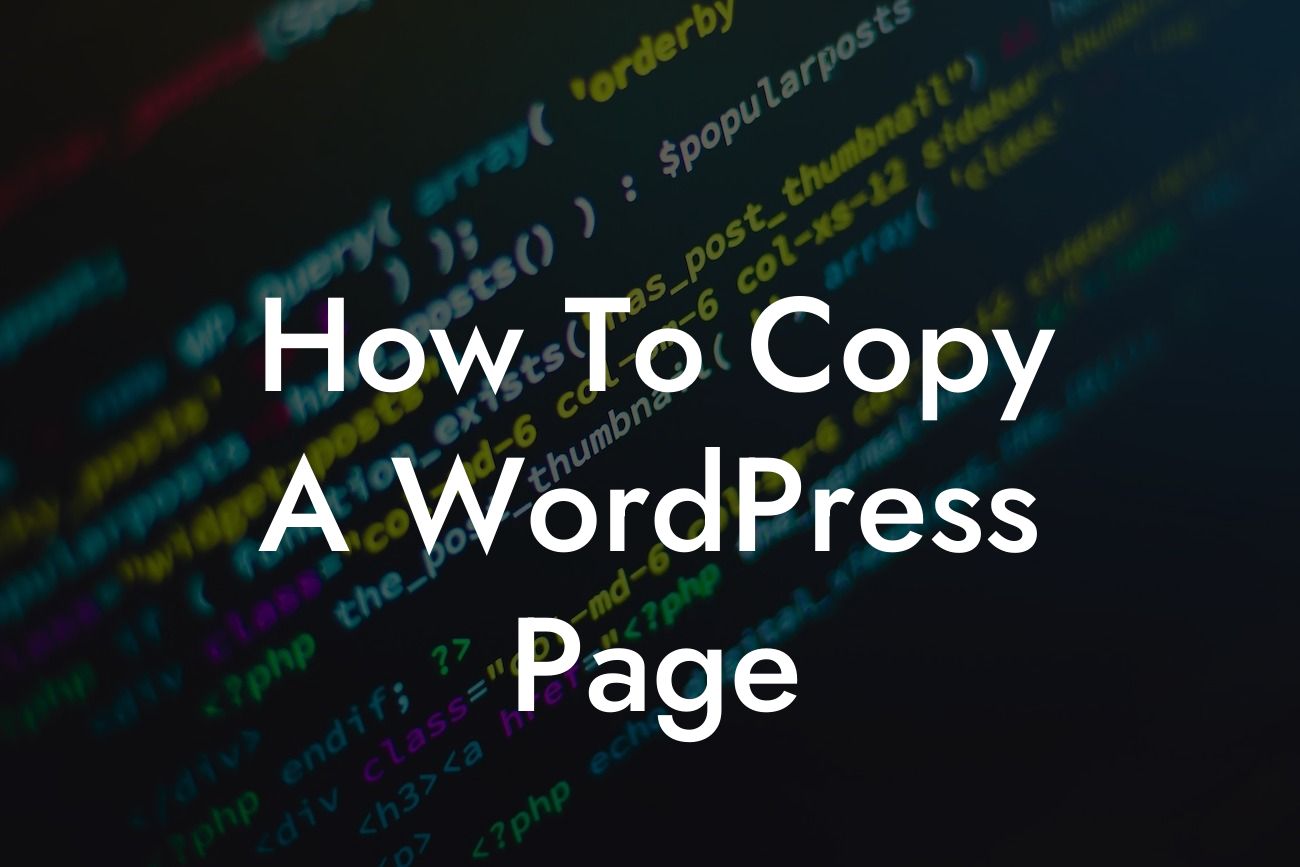Copying a WordPress page may seem like a daunting task, but fear not! In this article, we will guide you through the step-by-step process of duplicating your WordPress pages effortlessly. Whether you want to replicate an existing page for different purposes or create a backup, this comprehensive guide will equip you with the necessary knowledge. Say goodbye to being reliant on developers or struggling with complex coding – with our simple techniques, you'll be able to copy WordPress pages like a pro.
Before we dive into the nitty-gritty details, let's understand why copying a WordPress page can be beneficial for your small business or entrepreneurial endeavors. By duplicating a page, you can save time on designing and formatting, maintain consistent branding, experiment with different content variations, or even create a backup for peace of mind.
Now, let's get started with the step-by-step process of copying a WordPress page:
1. Install and activate a suitable plugin: To effortlessly copy a WordPress page, we recommend using the "Duplicate Page" plugin. Search for the plugin in the WordPress plugin repository, install it, and activate it.
2. Access the page you want to duplicate: Login to your WordPress dashboard and navigate to the page you wish to copy. Click on the "Duplicate This" button located below the title to initiate the duplication process.
Looking For a Custom QuickBook Integration?
3. Customize the copied page: After clicking the duplication button, you'll be redirected to the newly created duplicate page. Modify the content, update the relevant details, and personalize it as per your requirements.
4. Save and publish: Once the necessary changes have been made, click on the "Save Draft" or "Publish" button to save the duplicated page. Congratulations! You have successfully copied a WordPress page.
How To Copy A Wordpress Page Example:
Let's consider a scenario where you are running an e-commerce website and need to create multiple product pages with similar layouts. Instead of starting from scratch for each product, copying an existing product page can save you valuable time and effort. By using the "Duplicate Page" plugin, you can quickly replicate the layout, structure, and design of the initial product page, making it seamless to create and manage multiple product pages.
Copying a WordPress page is a powerful technique to elevate your online presence and streamline your website management. With the step-by-step process outlined in this article, you can confidently duplicate pages, experiment with designs, and ensure consistency across your website. Don't forget to share this guide with others who may find it helpful, explore more informative articles on DamnWoo, and try our awesome collection of WordPress plugins to supercharge your online success.













